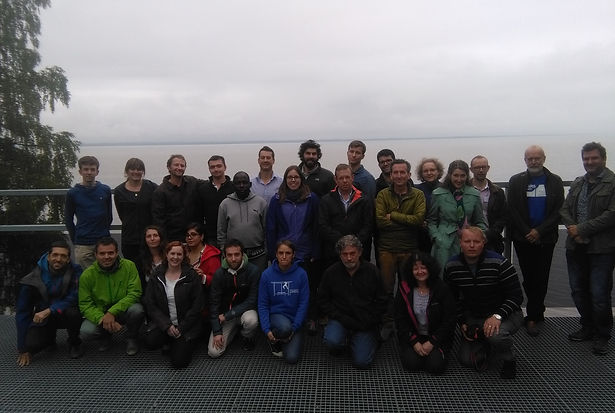
ABOUT MANTEL ITN
We are MANTEL!
Climatic extremes, in particular storms and heat waves, are now becoming more frequent, a trend that has been linked to climate change and is projected to continue in the coming decades. Understanding the impact of these events is important because of the negative effects they can have on the ecosystem services that lakes provide, in particular provision of safe water for drinking and irrigation, recreational use, and economic benefits such as fisheries and tourism.
Storms with high rainfall, for example, are typically associated with in-flow of large loads of dissolved organic matter (DOM), while toxic cyanobacterial blooms can form during heat waves. Both high levels of DOM, and the occurrence of cyanobacterial blooms, can lead to substantial costs for water managers and mitigation of their effects will be a pressing need into the future. High DOM levels in water result in formation of disinfection by-products (DBPs) such as trihalomethanes (THMs) when water supplies are chlorinated, compounds associated with diseases of the liver, central nervous system, and

Storm Ophelia heading towards Ireland in October 2017. Image: www.earth.nullschool.net
an increased risk of cancers. Heatwaves, through indirect and direct temperature effects, and pulses in nutrient loading during storms, boost the development of cyanobacterial blooms which can produce toxins that affect use for human consumption and for recreation.
The increase in such climate extremes is now projected to continue as a result of global warming. Exploring the occurrence and the effects of these events requires monitoring that captures the event itself (which may occur over hours) as well as the ensuing impact (which can be months or years).
As near real time monitoring of the freshwater environment has become more common, the true importance of such episodic events is becoming clear. Taken together, it is often the sum of multiple events that shape a given freshwater environment within the constraints imposed by regional climate and impact the resilience of the system to respond to change. These new insights require new theoretical frameworks and approaches to managing lakes and reservoirs.
As a product of EU funding initiatives over recent decades (including the Framework programme and the NETLAKE COST Action) there is now a well-established community of multidisciplinary scientific researchers and water resource managers using the automated lake high frequency monitoring (HFM) systems needed to track these events. The MANTEL ITN provided the next step - to build on this with HFM infrastructure supporting next generation science to protect our lakes, reservoirs and ecosystems services.
The aim of the MANTEL research programme was to ensure that future scientists gained expertise in the effects of episodic and extreme events in lakes and reservoirs, so that future water management strategies in Europe could explicitly account for their occurrence.
